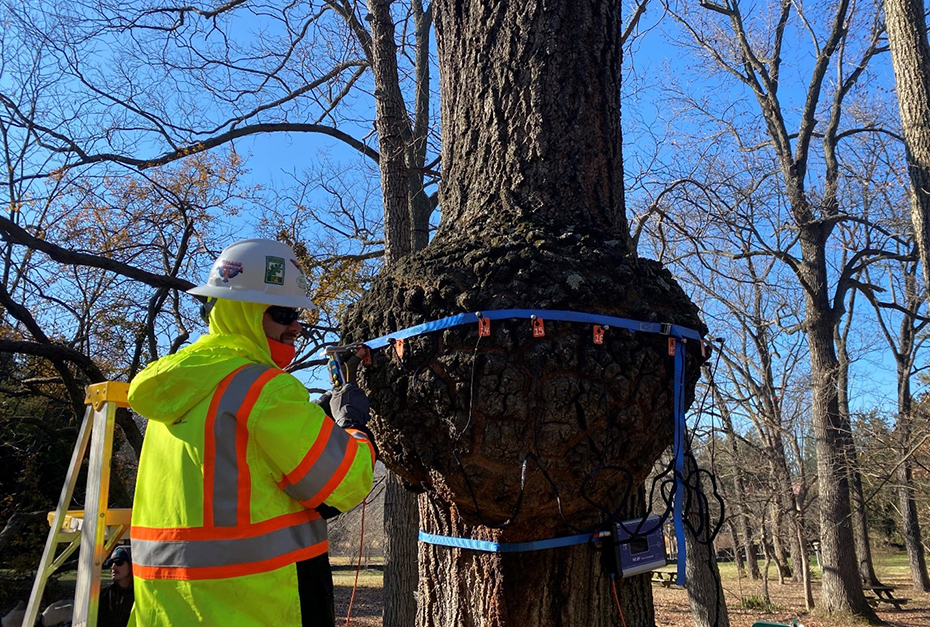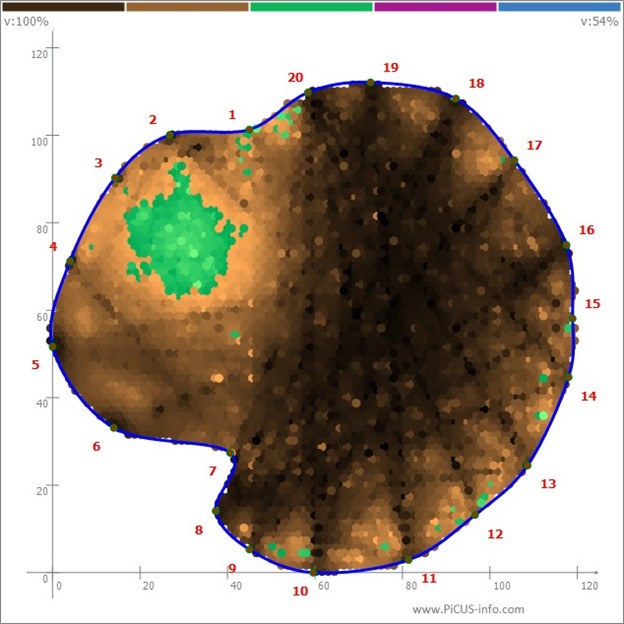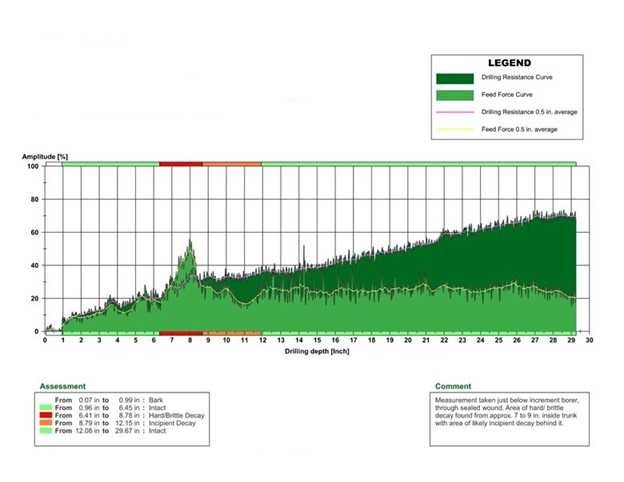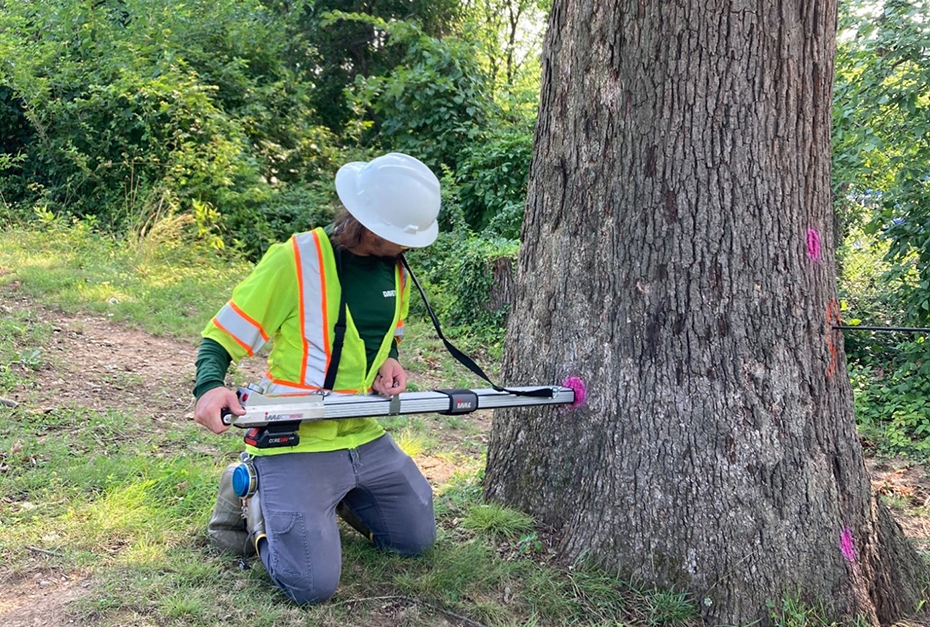 It’s a common refrain arborists hear from concerned homeowners, developers, and local government staff. Trees bring many benefits, including shade, air and water pollution reduction, and habitat for birds and other wildlife. Additionally, these benefits have economic value. Unfortunately, tree failure is an underlying risk of living near trees. As trees age and the landscapes around them change, tree characteristics and environmental dynamics can contribute to tree failure. Some of these include the branch structure of the tree, infrequent weather events, wood decay, tree exposure, construction activities, limited growing space, root health, and soil erosion. While trees carry inherent risk, Wetland Studies and Solutions, Inc.’s certified arborists can help you assess and mitigate that risk.
It’s a common refrain arborists hear from concerned homeowners, developers, and local government staff. Trees bring many benefits, including shade, air and water pollution reduction, and habitat for birds and other wildlife. Additionally, these benefits have economic value. Unfortunately, tree failure is an underlying risk of living near trees. As trees age and the landscapes around them change, tree characteristics and environmental dynamics can contribute to tree failure. Some of these include the branch structure of the tree, infrequent weather events, wood decay, tree exposure, construction activities, limited growing space, root health, and soil erosion. While trees carry inherent risk, Wetland Studies and Solutions, Inc.’s certified arborists can help you assess and mitigate that risk.
What can you do?
The first step is simple: contact one of our urban foresters with the Tree Risk Assessment Qualification (TRAQ) to conduct a formal risk assessment for you and make recommendations.
What can we do?
WSSI’s Urban Foresters provide data-driven risk assessments. We begin with a level II risk assessment to identify defects in a tree’s trunk, branches, and roots, and to evaluate the risks posed by those defects. This is a ground-based, visual assessment to identify common defects such as tree cavities, dead or broken branches, and root, branch, or trunk decay. During this assessment we may probe open cavities and roots to assess decay, tap tree trunks with rubber mallets to listen for internal cavities that are hidden from view, and peer into the canopy with binoculars to find decayed or broken branches.
If requested, or if we find a defect that requires a more in-depth analysis, we can conduct a level III tree risk assessment; For example, decay at the base of a tree could indicate more extensive subsurface root decay or a cavity that extends farther up the trunk of the tree. WSSI arborists identify and locate these more formidable risks using advanced detection techniques such as sonic tomography and resistance drilling.
Sonic tomography is a minimally invasive technique that uses sound waves to locate tree defects. Using a sonic tomograph, we can detect the speed at which sound travels through wood to generate an image called a tomogram. Sound travels at different speeds through solid and decayed wood, and the tomogram is color coded to reflect this property. The tomogram provides the size and location of decay within a trunk or branch. We then use this information to objectively determine the loss of strength in the wood and determine the failure potential of the tree or branch.

Arborist sets up the sonic tomograph on a tree trunk with a burl.

The sonic tomogram produced from the sonic tomograph. Healthy, solid wood is indicated by the brown coloration. Decayed wood is indicated by the green coloration.
Resistance drilling is a technique that measures the force of a drilling needle as it penetrates wood fibers. It is used to determine the depth and type of wood decay. Solid wood fibers require more force to penetrate, and decayed wood fibers require less force. Arborists evaluate graphs of the resistance force to compare wood density at the drilling location. While slightly more invasive than sonic tomography, it can be used to differentiate decay. A sudden decline in drilling resistance indicates a cavity or soft decay (white rot), and an increase in resistance indicates brittle decay (brown rot).

Resistance drill graphic showing an area of brittle decay (brown rot) between 6 and 9 inches drilling depth.

WSSI arborist using a resistance drill to detect decay in a white oak.
Mitigating Risk Together
WSSI consulting arborists use these tools and assessments to help you make tree management decisions that adhere to municipal regulations and your level of risk tolerance for your project. From single homes to private development projects and local parks, we can help you limit risk, keep your trees healthy and safe, and continue to enjoy the myriad social and economic benefits that trees provide.
If you would like more information regarding our tree risk assessments, or other tree assessment or consulting services, please reach out to the contacts below.
